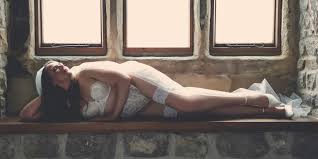What is the best lighting for nude photography?
The best Boudoir Lighting for nude photography, like any other genre of photography, can depend on the specific artistic goals and preferences of the photographer and the model. However, here are some common lighting setups and considerations that can work well for nude photography:
Natural Light:
Soft, diffused natural light can be incredibly flattering for nude photography. It minimizes harsh shadows and provides a gentle, even illumination. The best times for natural light are during the golden hours, which occur shortly after sunrise and before sunset.
Window Light:
If shooting indoors, window light can provide a soft and diffused source of natural light. Place the subject near a large window, and use sheer curtains or diffusers to further soften the light if necessary.
Studio Lighting:
Studio lighting provides more control over the lighting conditions. For a classic look, you can use a setup with two softboxes or large soft umbrellas on either side of the model. This creates even, flattering illumination.
Continuous Lighting:
Continuous Boudoir Lighting, such as LED or fluorescent panels, allows you to see the lighting effect in real-time, making it easier to adjust and experiment. Soft, diffused continuous lights work well for nude photography to avoid harsh shadows.
Low Key Lighting:
Low key lighting involves using mostly shadows with minimal illumination on the subject. This can create dramatic and sensual images, emphasizing contours and shapes.
High Key Lighting:
High key lighting, on the other hand, uses bright, even illumination to produce images that are well-lit and have a clean, ethereal quality.
Rim Lighting:
Rim lighting is a technique where a light source is placed behind the subject, creating a subtle glow around the edges of the model's body. This can add depth and highlight curves and contours.
Candlelight:
For an intimate and sensual mood, candlelight can be used as a unique and warm light source. Be cautious when using real candles for safety reasons, and consider LED candles as a safer alternative.
Colored Lighting:
Experimenting with colored gels over your light sources can add a creative and artistic dimension to nude photography. Different colors can evoke various moods and emotions.
Silhouettes:
Creating silhouette images can be a powerful artistic choice. This involves backlighting the subject, so the outline is dark against a brighter background.
Ultimately, the choice of lighting for nude photography should align with your creative vision and the message you want to convey through your images. It's important to communicate openly and respectfully with the model, ensuring their comfort and consent throughout the process. Additionally, consider the privacy and legal aspects of nude photography, as laws and regulations regarding such photography can vary by location.
Visit website now - KTS Boudoir Magazine.
.jpeg)
.jpeg)
.jpg)
.jpg)

Comments
Post a Comment